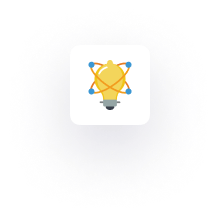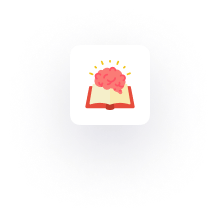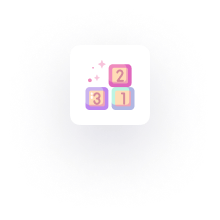Python is one of the most popular programming languages, especially in web development. With its simplicity and vast ecosystem, Python has become the go-to language for building scalable and efficient web applications.
Whether you're just starting your journey as a backend developer or exploring frameworks to elevate your Python development skills, this article will dive into the top 5 Python frameworks you should learn in 2025.
Why Choose Python for Web Development?
Python has consistently ranked as one of the most beloved programming languages in the Stack Overflow Developer Surveys. Its syntax is clean, easy to read, and highly versatile, making it an excellent choice for both beginners and seasoned developers.
Here are some reasons why Python is ideal for web development:
Ease of Learning and Use: Python’s simple and readable syntax makes it an ideal choice for beginners.
Rich Libraries and Tools: Python offers an extensive range of libraries that help developers with everything from machine learning to web scraping.
Strong Community Support: Python has one of the largest developer communities, ensuring plenty of resources, tutorials, and frameworks are available.
Scalability and Flexibility: Python frameworks are capable of handling everything from small-scale applications to large, complex enterprise systems.
When you’re ready to dive into Python for Backend Development, I will recommend the “Become a Python Backend Engineer” course. It is an all-in-one Python course for learning backend engineering with Python. This comprehensive course is designed for Python developers seeking proficiency in Python.
Top 5 Python Frameworks to Learn in 2025
We’ll explore the top 5 Python frameworks based on popularity, ease of use, community support, GitHub stars, and real-world usage. These frameworks will help you get up to speed quickly and are great for building production-ready applications.
Django
Django is a high-level Python framework that promotes rapid development and clean, pragmatic design. It’s known for its “batteries-included” philosophy, meaning it provides all the necessary tools for developers to build a web application without needing third-party libraries.
Features:
Built-in admin interface for managing application data
Secure by default (protection against SQL injection, cross-site scripting, etc.)
Robust ORM (Object-Relational Mapping) for interacting with databases
Supports RESTful APIs and easy integration with other APIs
Extensible with third-party packages
Popularity:
GitHub Stars: 83.5k+
PyPI Downloads: 24.2M+ per month
Usage: Widely used by companies like Instagram, Pinterest, and Spotify.
 Learning Resources:
Learning Resources:
Flask
Flask is a lightweight Python web framework that's often described as a “micro-framework.” It doesn’t include many built-in features like Django, but is extremely flexible, allowing developers to pick and choose the libraries they need.
Features:
Minimalist approach with minimal setup
Highly extensible (great for microservices and APIs)
Built-in support for Jinja2 templating and Werkzeug WSGI toolkit
Easy integration with other libraries for added functionality
Popularity:
GitHub Stars: 69.5k+
PyPI Downloads: 100.8M+ per month
Usage: Flask powers applications like Netflix, Reddit, and Lyft.
 Learning Resources:
Learning Resources:
FastAPI
FastAPI is a modern, fast (hence the name), and high-performance web framework for building APIs with Python. It is based on standard Python type hints, making it one of the most developer-friendly frameworks out there.
Features:
Extremely fast (competes with Go and Node.js in benchmarks)
Automatic interactive API documentation (using Swagger UI and ReDoc)
Built-in data validation using Python type hints
Asynchronous programming support (great for building high-performance applications)
Excellent for RESTful APIs and GraphQL
Popularity:
GitHub Stars: 52k+
PyPI Downloads: 92.9M+ per month
Usage: Companies like Microsoft, Uber, and Netflix use FastAPI for building APIs.
 Learning Resources:
Learning Resources:
Tornado
Tornado is an asynchronous web framework and networking library designed to handle large numbers of simultaneous connections. It is ideal for building long-running network applications like real-time web services and websockets.
Features:
Non-blocking network I/O
Real-time web functionality (perfect for chat applications, dashboards, etc.)
Scalable for handling thousands of open connections
Built-in support for websockets and HTTP/2
Popularity:
GitHub Stars: 21.9k+
PyPI Downloads: 55.9M+ per month
Usage: Popular for real-time applications like FriendFeed and Dailymotion.
 Learning Resources:
Learning Resources:
Pyramid
Pyramid is a flexible and minimalistic Python framework used for building both small and large-scale applications. It allows developers to choose the right tools and libraries based on their project’s needs.
Features:
Highly flexible (developers can choose their templating, database, and other components)
Easy-to-use authentication and authorization system
Built-in support for URL dispatching and traversal
Ideal for applications of any size (small or large)
Popularity:
GitHub Stars: 4k+
PyPI Downloads: 2.1M+ per month
Usage: Pyramid is used by large companies like Mozilla.
 Learning Resources:
Learning Resources:
Choosing the Right Framework
Selecting the right framework depends on your specific needs:
For Rapid Development: Django and Flask are excellent choices for quickly building applications.
For High-Performance APIs: FastAPI and Tornado are great for building scalable, asynchronous APIs.
For Flexibility and Minimalism: Pyramid and Flask provide a lot of flexibility with minimal overhead.
Bonus
Web2py: Great for beginners with its full-stack nature.
CherryPy: A minimalistic Python framework ideal for building small web applications.
Conclusion
Python offers a wide variety of web frameworks to choose from, each catering to different needs. Whether you are building a full-fledged web application or a high-performance API, there's a Python framework suited to your project.
By learning and mastering one or more of these frameworks, you'll be able to develop scalable, efficient, and secure applications with Python in 2025.
Which framework are you excited to learn next? Let us know in the comments!





